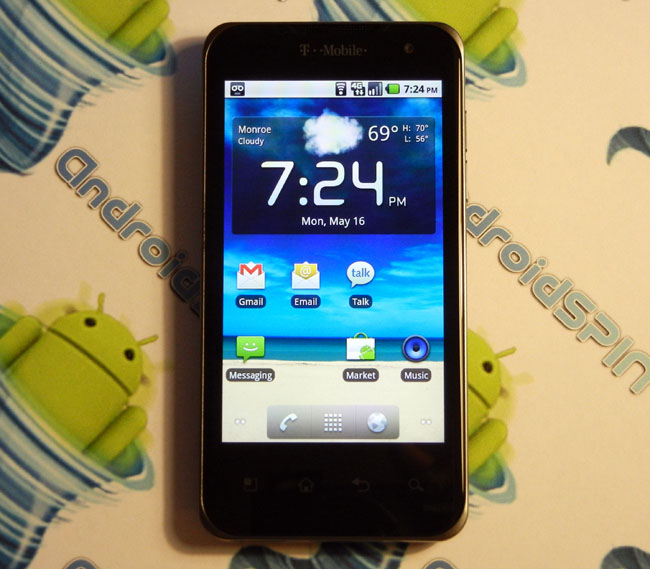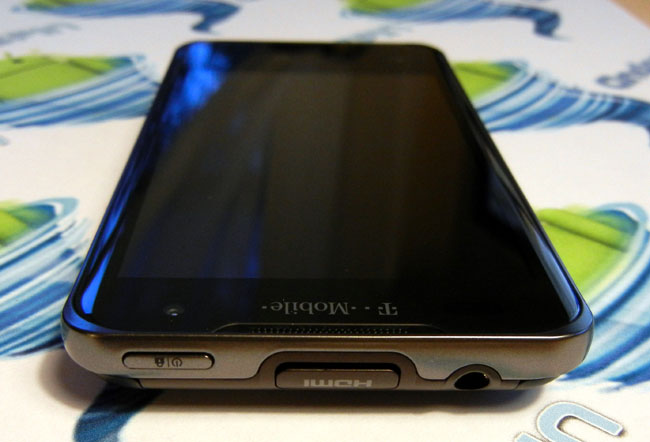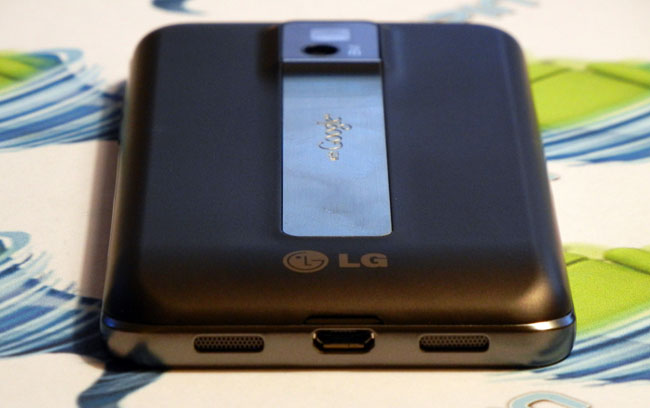
It’s funny how quickly technology shrinks, speeds up and then hits us all at once. Â There have been so many announcements recently of upcoming Super phones, it’s hard to keep up. Â One current device I had not had a chance to play with for any length of time was the T-Mobile G2x and I thought it was about time to take a closer look. Â With that, I asked our friendly peeps over at LG if they could send me a device to play with and low and behold, a package was overnighted and arrived this morning.
I was going to wait and see if the Gingerbread update hit and then do more of a review, but my hands were itching and I just couldn’t wait. Â So here is my first impressions of the T-Mobile G2x.
First, here’s a quick recap of the T-Mobile G2x:
The processor inside the G2x is the NVIDIA Tegra 2 AP20H dual-core processor.  This processor is two, 1 GHz cores inside a single processor.  The promises were that each of the processors and separate areas of the processor could be selectively shut down when they were not required and that we should expect better battery performance because of this. In a coupe of weeks (or earlier) I hope to let you know if this is the case or not.  The processor is all driving an 800 x 400 pixel display.
The G2x is running Google Android 2.2 (Froyo) with an Android 2.3 (Gingerbread) update expected any day now.  There is 8 GB of internal memory (ROM), 512 MB of RAM and the now standard 32 GB of expandable memory with the MicroSD card slot.  The device is 4.88 inches in height, 2.48 inches in width, 0.43 inches in it’s depth and weighs just 5 ounces.
The G2x also features and 8 mega-pixel rear facing camera with single LED flash and VGA 1.3 mega-pixel front facing camera, Bluetooth, WiFi and full 1080p video recording and HDMI 1080p video output.
Here’s a photo comparison between the Google Nexus One (bottom phone), T-Mobile myTouch 4G (middle phone) and the T-Mobile G2x  by LG (top phone) to show the size difference.  The G2x looks pretty thick in this picture but is mainly due to the protruding camera lens on the rear holding off the phone below.  While this does add thickness to the device, the remainder of the body is pretty slim and feels good in your hands.

The device’s screen is contoured on the front, which is difficult ot capture in a photogaph, but it does add the overall feel of the device and makes the front face seamless to the touch and very easy for dragging icons and shortcuts to the very edges of your screen.  See if you can tell from the two photos below:


The G2x has almost all the usual buttons and switches that other Android are wearing, but there are also a couple of missing areas that already annoy me.  There is no trackball or trackpad for fine control of your cursor on your screen.  The G2x does run a copy of Swype and you can easily get to the cursor keys within that keyboard, but I’m so used to devises that have a trackpad that it’s hard for me to not have one.  I’m positive that if this was my main device and I used it for some time, it would become second nature, but right now, it’s a pain.  The other button missing from the G2x is a dedicated camera button.  this is the first device I’ve reviewed that does not have one, and I must admit that I very rarely use the camera button on my phone anyway, so it’s not really an issue, just seems weird that it doesn’t have one.
Now for another one of my pet peeves… where is the LED?  I first noticed the lack of an LED when I unpacked the G2x, plugged in the charger and immediately thought that it wasn’t charging as there was no visual indication at all that juice was being absorbed by the device.  One press of the power button revealed that the device was working and once started, the usual battery animation tipped me off to the charger working as designed.  Will they ever learn; didn’t enough people give Samsung a hard time when they released the Galaxy S line without a front facing LED indicator?  I sent a text message to the phone to see if an LED was used for notifications, still nothing.  Although something odd happened; when the G2x received the text message it immediately woke itself up.  That can’t be good for the battery life if the device is constantly waking up and turning the screen on each time it receives a message.
This is just my first couple of hours with the G2x and I’ll be putting it through it’s paces over the next couple of weeks. Â I’ve highlighted a couple of negatives in this initial write up but don’t get me wrong, every phone has its flaws but this is still one beast of a phone. Â It’s incredibly responsive and the screen seems clear and bright. Â The sound coming from the speakers appears at first testing to be louder than anything I’ve previously tested, which will be great if it means you really can use the speaker phone on this device.
So that’s all I’ve got for now.  Take a look at a few more shots of the device.
The top of the device is where you’ll find the power/sleep button, mini HDMI connector and 3.5mm headset socket.

On the base of the device is the stereo speakers and USB connector for charging and connection to your computer.

The rear of the device houses the 8 mega-pixel camera and single LED flash.  The area around the camera lens and flash protrudes from the rear of the device and i can see that being prone to scratching and damage.

The right hand side of the G2x is the home of the volume buttons.

I hope this give you a little more insight into the T-mobile G2x and I’ll be back soon with more information on the progress of my T-Mobile G2x testing. Hopefully, while I have the device, we may see the Gingerbread update emerge and I can give an even better report on this new power house from LG.








